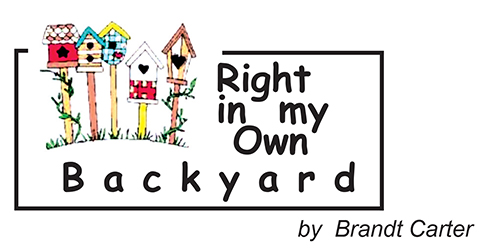
|
Broad Ripple Random Ripplings

The news from Broad Ripple
Brought to you by The Broad Ripple Gazette
(Delivering the news since 2004, every two weeks)

|
| Brought to you by: |

|

|

|

|

|

|
Converted from paper version of the Broad Ripple Gazette (v12n21)
Right in my Own Backyard - Fall Color's Magic - by Brandt Carter
posted: Oct. 16, 2015

Fall Color's Magic
Sing a song of seasons!
Something bright in all,
Flowers in the summer
Fires in the fall!
-Robert Louis Stevenson, Autumn Fires
Just by walking the neighborhoods of Broad Ripple and visiting local parks, you can enjoy autumn. Seeing fiery red maple, tawny oak, or yellow tulip trees draws you into fall's colorful palate. Sun casts added drama with its golden glow. More than romance, poetry, and celebrations of harvest, the science of this beauty is what makes the season awesome.
I'm always amazed by how different autumns can be-some dry, some drab, some wet, some vibrant. The color change is endlessly variable too. I remember when leaves turned by October 10. More recently, the peak of color has been in late October. So what causes leaves to transform, a phenomenon we can all enjoy even in our own backyards?
The answer begins with spring and summer. Trees and shrubs are basically green, and for a grade school review, the leaves contain chlorophyll. This makes them green. When days start getting shorter, the chlorophyll disappears so that trees shut down their food making to live through winter without leaves.
Length of nights and the cooler weather affect the color we see. Warm sunlight by day and cool nights cause the glucose in change-prone leaves to turn bright red or purple. The brown color of oaks and other trees is formed from waste left as chlorophyll fades away.
Three pigments contribute to colorful leaves:
- Anthocyanins give blues and dark red color
- Chlorophyll gives leaves their basic green; trees us it to produce sugars-their food.
- Carotenoids produce yellow, orange, and brown colors.
Temperature and moisture are primary influences for vibrant colors. A series of warm, sunny days and cool, crisp, but not freezing nights seems to bring about the most spectacular color displays. Sugars are produced in the leaf during warm fall days while cooling spurs production of the brilliant anthocyanin pigments, which yield reds, purples, and crimson. Because carotenoids are always present in leaves, yellow and gold leaves are fairly constant from year to year. Droughts or abundance of rain also affect the intensity of colors. Droughts can delay fall color whereas warm days and nights can dull coloration. The best fall color is supposed to be produced by a warm, wet spring, a favorable summer weather pattern, followed by those warm sunny autumn days and cool nights. Because temperatures and rainfall vary from year to year, there are any number of combinations influencing color patterns.
Surely the majestic beauty of colorful trees is one of the greatest attractions of this season, and we have only to wait to see what Mother Nature has is store for us each year.
C O L O R M E !

Brandt Carter, artist, herbalist, and naturalist, owns Backyard Birds at 2374 E. 54th Street. Visit her web site www.feedbackyardbirds.com. Email your bird questions to Brandt@BroadRippleGazette.com
brandt@broadripplegazette.com

|

|

|
| Brought to you by: |

|

|

|
| Brought to you by: |

|

|

|


